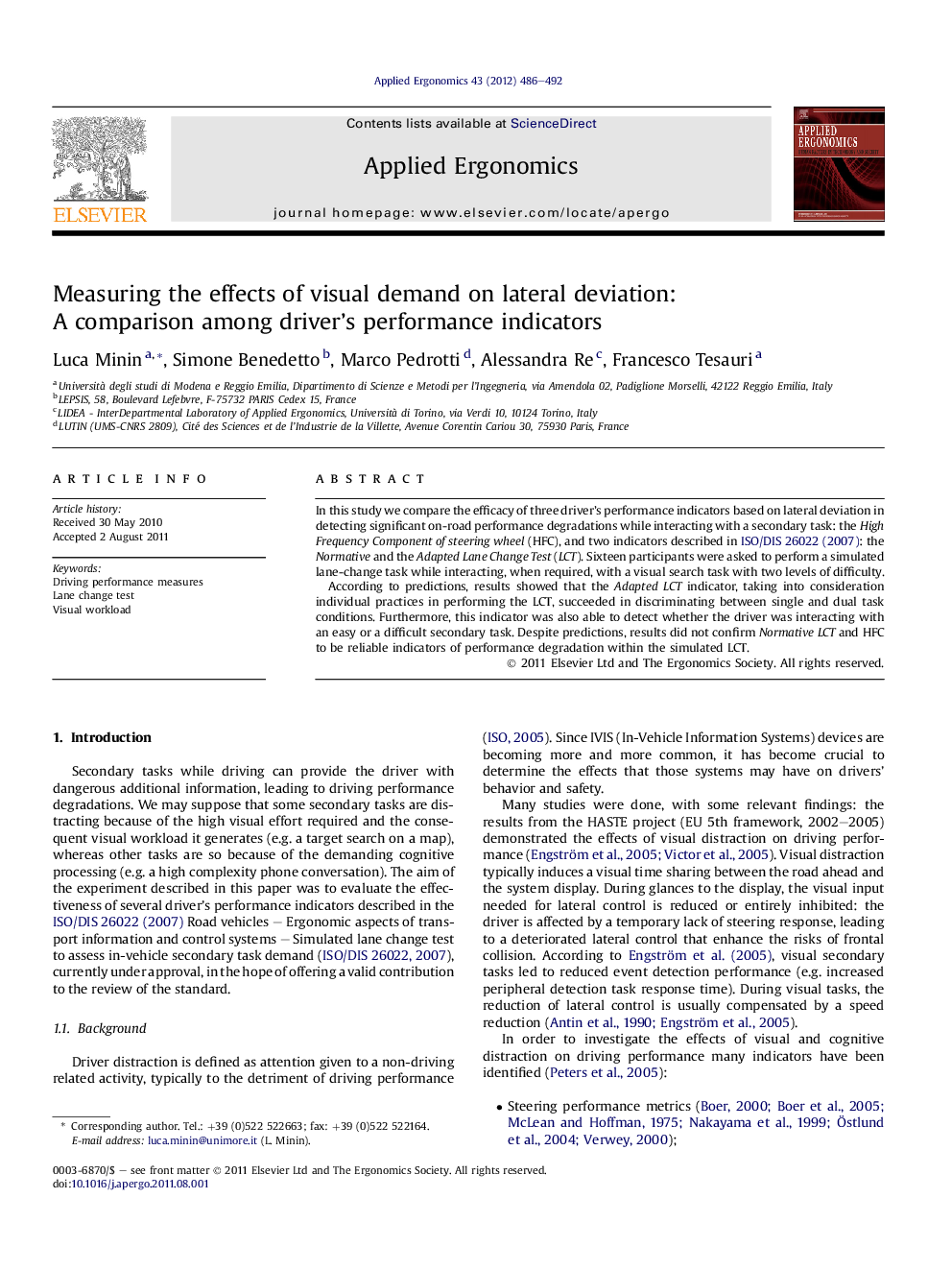| Article ID | Journal | Published Year | Pages | File Type |
|---|---|---|---|---|
| 548735 | Applied Ergonomics | 2012 | 7 Pages |
In this study we compare the efficacy of three driver’s performance indicators based on lateral deviation in detecting significant on-road performance degradations while interacting with a secondary task: the High Frequency Component of steering wheel (HFC), and two indicators described in ISO/DIS 26022 (2007): the Normative and the Adapted Lane Change Test (LCT). Sixteen participants were asked to perform a simulated lane-change task while interacting, when required, with a visual search task with two levels of difficulty.According to predictions, results showed that the Adapted LCT indicator, taking into consideration individual practices in performing the LCT, succeeded in discriminating between single and dual task conditions. Furthermore, this indicator was also able to detect whether the driver was interacting with an easy or a difficult secondary task. Despite predictions, results did not confirm Normative LCT and HFC to be reliable indicators of performance degradation within the simulated LCT.
► We compared three indicators in detecting drivers’ impairment in single and dual tasks. ► Two indicators based on lateral deviation – Adapted and Normative LCT – ISO/DIS26022. ► One indicator based on steering wheel variation (HFC). ► Adapted LCT discriminated drivers’ lateral impairment between single and dual task. ► Normative LCT and HFC were not reliable indicators of lateral degradation.
